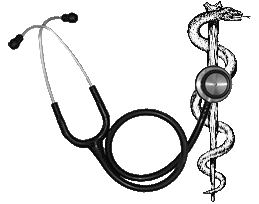 Economically speaking, the American healthcare system is not built for patients, because patients aren’t the ones paying for it directly. Insurance companies are.
Economically speaking, the American healthcare system is not built for patients, because patients aren’t the ones paying for it directly. Insurance companies are.
See, health care in the U.S. is mostly a B2B insurance business. It is only B2C when insurance doesn’t cover expenses to the patient. And even then, insurance still pays for it when patients don’t.
The history of the U.S. health care industry is one essentially of regulatory capture by the insurance industry, which today is a vast interlocked cabal of insurance companies and kieretsus of hardware, software and service providers.
And, because this system is mostly disconnected from the controlling effects of direct accountability to patients (which we might have had if the system had been B2C), costs and inefficiencies within the system have grown out of control. To say the least of it.
It is therefore a mistake to assume that patient involvement in the system is “consumerism” in either of its common meanings: 1) acquisition of goods and services in ever-increasing amounts, or 2) The protection or promotion of the interests of consumers.
We tend to make this mistake whenever we conflate customers and consumers. We do this most commonly in businesses that offer B2C services paid for in a B2B way—as we have in the insurance business called healthcare. The split between the two is real, but treated as if it is not. Thus we have companies going on about how much they care about their consumers, users or patients, who they say have a “choice,” when in fact they have little or none.
Thus it is a mistake to assume that patients have any direct economic influence over what they get from health care providers whose primary customers are insurance companies. It really doesn’t matter is the care is provisioned through an “integrated clinical practice” (Mayo Clinic) “integrated managed care consortium” (e.g. Kaiser Permanente), “healthcare delivery system” (e.g. Cone Health), “managed healthcare group” (UnitedHealth, Anthem, Aetna), a “federation” of the same (Blue Cross Blue Shield) or a plain old “health insurance company” (Humana), the business is almost entirely upstream of the point where care is provided: inside the insurance business that gets paid to fund the whole mess.
The main exceptions in this system are Medicare and Medicaid, which are basically government-run insurance businesses.
Companies with internal splits between their customers and consumers tend to be blind to what its consumers actually want or need — or can bring to the market’s table on their own — because money comes from somewhere else. It’s conflationary shell game, making it easy to think and say the consumer is actually a customer, or like a customer, when they’re not, because all the economic action is taking place elsewhere.
I’ve seen this for decades in commercial broadcasting, and with publishers whose primary customers are advertisers rather than those who “consume” what is now called “content” (as if it were nothing more than container cargo), even if those consumers in some cases (such as with newspapers and magazines) are paying subscribers. The primary customers are still advertisers and their agents.
I’m seeing it today in the cabal of perpetrators and beneficiaries of the four dimensional shell game that online advertising has become. This is why its members, all B2B businesses, miss the clear signal “users,” “consumers” and “the audience” are sending with ad blocking and tracking protection.
The only way we can begin to fix the U.S. healthcare system is by making patients as powerful and engaging as they would be if they were full-fledged customers of the care they receive, rather than mere consumers of services. And this can only begin with better ways for each of us to take control of our own health care data (which is valuable to those services), and how it is used by services mostly paid for by others.
The best approach I have seen so far to this challenge is HIE of One, a project of two MDs, Adrian Gropper and Michael Chen. HIE stands for Health Information Exchange, which Adrian and Michael describe as “a patient-centered health record based on the FHIR and HEART interoperability standards.”
Here is the main reason I like its chances: it is based on open source code already in development. This means many developers can step in and help raise its barn, for all of us.
If you’re a developer, and you care about the health of your self, your friends and family, and the human species, I highly recommend stepping up and stepping in. I can’t think of any #VRM project with more leverage on the good of the world—as well as one country’s most essential yet fucked-up service economy.
Leave a Reply